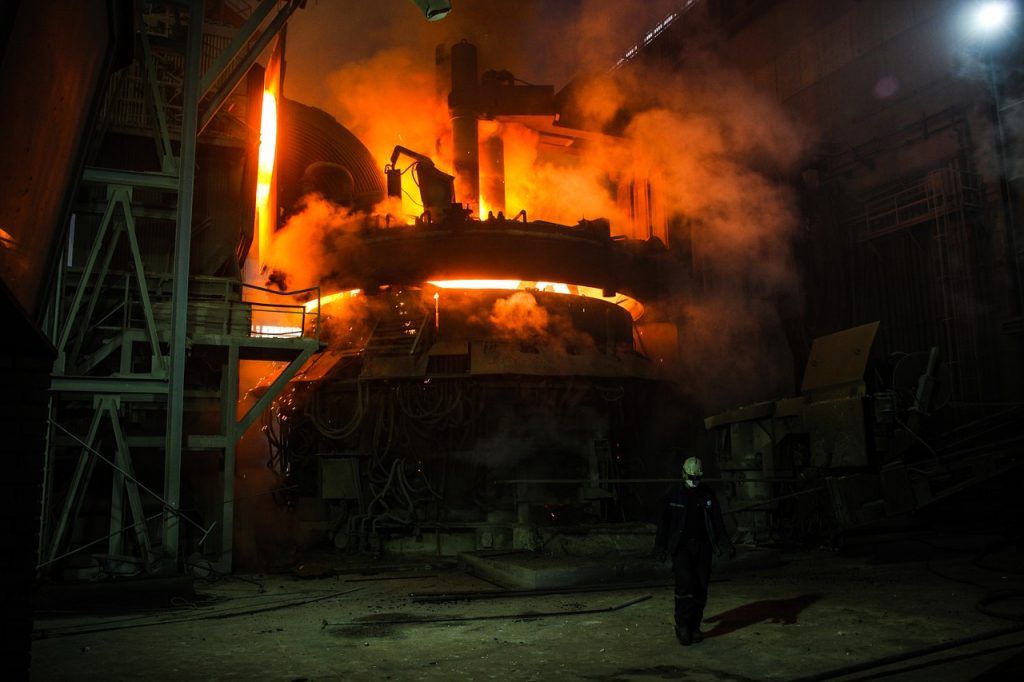Steel Industry Trends: The Death of the Blast Furnace?
By: Erik Kane | On: October 30, 2018

I was born and raised in the heart of the Great Lakes region, where steel used to reign supreme. When I think of a steel mill I get images of gray skies, rusty columns, and billowing smokestacks swirling through my mind. Something about the steel industry evokes a post-apocalyptic atmosphere. It could be because the industry itself is so rugged and hot and dirty. Maybe it’s because I wasn’t around during its heyday, and have seen my share of hulking shuttered mills. One thing is for sure, the steel industry in the United States isn’t the force that it once was, and what we have today has changed a great deal. Technology and market demand has transformed the competitive landscape and is making the towering blast furnaces of old less and less common. Steel industry trends: let’s take a closer look at what’s going on.
The Old Way

The traditional way of making steel is a mainly a two-fold process: turning the natural resource of iron ore into pig iron, and then further refining that iron into steel. Because of the infrastructure required to perform each process, it made sense for each steel mill to make both iron and steel, giving rise to the integrated mill. As the industry demand increased, so did the size of the mills themselves. Because the smelting process is continuous, the footprint of the mills grew to reach epic proportions to increase their efficiencies.
And with production volume of this tremendous size comes all the lumbering characteristics that go with it. Keeping huge numbers of employees safe and increased maintenance challenges to say the least with steady, continuous production required to operate profitably. Coupled with lowered flexibility, these huge mills began to have issues keeping up as other areas of the globe began to catch them in competitiveness, and new technologies began to give rise to different strategies.
Modern Steelmaking
As a consumer when you think of the most recycled materials you probably think of glass, paper and plastic. But the most recyclable material in the world is steel! Metals can be recycled repeatedly without any degradation, are easily separated from waste streams, and represent a huge amount of the total material we consume pound for pound. These factors paved the way for the mini-mill. While integrated mills are still used around the world and the US for making new steel, mini-mills primarily recycle the volumes of old steel that we already have, re-refine it, and sell it.

Because they don’t need to produce iron, mini-mills have a significantly smaller footprint (hence the name). This means each mill is much smaller, and easier to maintain. Mini-mills have great logistical advantages: as they can be located closer to scrap yards, end users, shipping ports, etc. Because mini-mills produce their steel using electricity (with an electric arc furnace, or EAF) instead of burning coke and limestone, they are cleaner, use less raw materials, and are able to more quickly change between different alloys. These economies provide them with greater flexibility when compared to large, integrated mills.
The ironmaking side of things has also seen significant innovation, specifically with the direct reduced iron (DRI) technology. The “direct” element comes from the fact that the ore doesn’t have to be melted down and doesn’t create any slag (the waste elements from the process of smelting). This process saves energy by using a chemical process, avoiding the need to melt the ore down with hot blast. Like mini-mills, DRI plants have a smaller-scale capital investment requirement, which makes this newer technique even more attractive, and is already being employed all over the world.
Steel Industry Trends for the Future
While some of the great old mills are still in operation today, the current market direction will continue to favor smaller, more flexible, mills. Evidence of this can be seen in pilot “micro mills” that are even smaller and more specialized than the mini-mills, often designed to produce only a single product such as rebar. Newer electric furnace technologies are also on the rise with induction furnaces which are cleaner, more controlled, and use less electricity than their EAF counter-parts. These new furnaces prevent valuable alloying elements from being burned off further reducing the cost.
Ironmaking in the US has been slow to adapt, because our aging blast furnace technologies that exist are still producing large quantities of quality pig iron that can satisfy most of the domestic demand. A few DRI projects are in the works, but other areas of the world developed their steelmaking capabilities as newer technology emerged, whereas the US did not have this technology when most of our infrastructure was established.
The domestic steel industry will adapt to these changing conditions and demands, and Hose Master will continue to be there to supply high quality metal hose and metal expansion joints into those mills. Steel mills represent one of the most strenuous environments for hose applications and Hose Master has been providing solutions to the industry for many years. If you have a need for metal hoses or expansion joints in a steel mill, contact us at insidesales@hosemaster.com or 216-481-2020 and we would be happy to assist you.
Copyright 2018, Hose Master, LLC
All Rights Reserved

